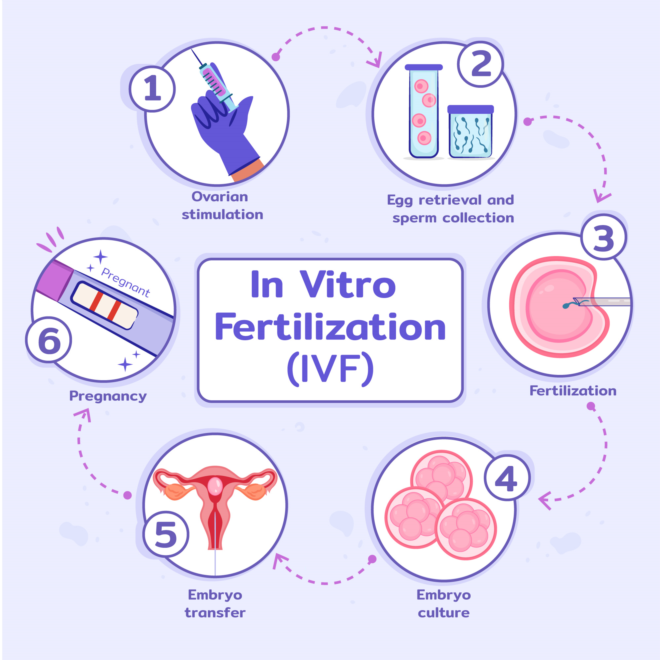
blog address: https://best-ivf-center-in-nashik.blogspot.com/2023/03/how-long-does-ivf-take-to-get-pregnant.html
blog details: In Vitro Fertilization (IVF) is a fertility treatment that involves retrieving eggs from the ovaries, fertilizing them with sperm in a laboratory dish, and then transferring the resulting embryos to the uterus. This process can take several weeks to complete, and there is no guarantee of pregnancy, even after multiple cycles of treatment. In this article, we'll explore the timeline of the IVF process and what factors can affect the chances of success.
Step 1:
The first step in the IVF process is ovarian stimulation. This involves taking medication to stimulate the ovaries to produce multiple eggs. This medication is usually administered by injection and may be taken for several days to a few weeks, depending on the individual's response. During this time, your doctor will monitor your progress through regular ultrasounds and blood tests to ensure that your ovaries are responding well to the medication.
Step 2:
Once your eggs have matured, your doctor will schedule an egg retrieval procedure. This involves a needle being passed through the vagina to the ovaries, and the eggs are retrieved under sedation or anesthesia. After the egg retrieval procedure, the eggs are taken to a laboratory and fertilized with sperm in a dish. This process is known as insemination, and it can take a few hours to a day to complete.
Step 3:
After the eggs have been fertilized, they are monitored for several days to determine which ones are healthy and viable for transfer. During this time, the fertilized eggs develop into embryos. The embryonic development stage is crucial, as it determines the quality and health of the embryo. The best embryos are selected for transfer to the uterus, and the remaining embryos may be frozen for future use.
Step 4:
The next step in the IVF process is embryo transfer. This involves the placement of one or more embryos into the uterus through a thin, flexible tube called a catheter. The procedure is usually painless and does not require anesthesia. After the transfer, the patient is advised to rest for a short period before leaving the clinic.
Step 5:
About two weeks after the embryo transfer, a pregnancy test is conducted to determine if the procedure was successful. If the test is positive, the patient is considered pregnant, and a follow-up appointment is scheduled for an ultrasound to confirm the pregnancy and ensure that the embryo is developing correctly. If the test is negative, the patient may have to undergo another cycle of IVF.
The success rate of IVF varies depending on a variety of factors, including age, the cause of infertility, and the number of embryos transferred. Generally, the success rate of IVF decreases as a woman gets older. According to research, the success rate of IVF is approximately 48% for women under the age of 35, 38% for women between the ages of 35 and 37, 29% for women between the ages of 38 and 40, and 16% for women over the age of 42.
It's important to note that IVF can be an emotionally and financially draining process, and success is not guaranteed. It may take multiple cycles of treatment before pregnancy is achieved, and the cost of the cycle depends on the clinic and location.
Final words
In conclusion, the timeline of the IVF process can take several weeks to complete, and the chances of success depend on several factors, including age, the cause of infertility, and the number of embryos transferred. While IVF can be an effective treatment for infertility, it's essential to discuss the risks and benefits with your doctor and consider all options before deciding to proceed with treatment.
keywords: IVF treatment, IVF process, infertility treatment, embryo transfer
member since: Mar 04, 2023 | Viewed: 674